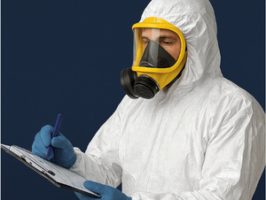There is a range of health and safety regulations workplaces must comply with, but none are as comprehensive as the Health & Safety at Work Act (HSWA). The primary legislation for health and safety in the UK, the Act sets out the roles of employers and employees on workplace premises.
Here, we explain everything you need to know about the HSWA – and what your workplace must do to comply with it.
What is the Health and Safety at Work Act 1974?
Introduced in 1974, the Health and Safety at Work Act is the primary law covering workplace health and safety in the UK.
It outlines the core responsibilities of employers, employees, and others to maintain a safe, healthy, and supportive working environment.
Understanding the Health and Safety at Work Act
The HSWA is 121 pages long, so we’ve summarised the key points you need to know.
As a business owner, you must:
- Appoint a competent person – This can be one or multiple individuals who will assist with the management of health and safety in your workplace. To qualify as competent, they should have relevant skills, knowledge and experience to identify and mitigate hazards.
- Develop a health and safety policy – By law, every workplace must have a health and safety policy. This should explain how health and safety in the premises will be managed by the employer, stating who is responsible for each task and how these will be carried out. If you have five or more employees, this policy must be written down.
- Consult employees – You should consult your workers to ensure your workplace health and safety policies are effective. This includes consulting them on hazards involved in their job, informing them of how to control risks and providing training to allow them to carry out their work safely.
- Provide information and training – All employees must be given clear information and health and safety training to work safely for themselves and others. This includes contractors, self-employed workers and new workers.
- Carry out a risk assessment – You must identify possible hazards in your workplace, assess the likelihood and severity of the risk, and take steps to remove the hazard or manage the risk.
- Provide workplace facilities – It’s essential to provide proper and ample facilities in your workplace, such as toilets, heating, good ventilation, suitable lighting and clean drinking water. You should also ensure all equipment is maintained with no hazardous obstructions.
- Provide safe equipment – You must ensure all equipment provided in your workplace is safe to use. Regular maintenance should be carried out to identify any faults and reduce the risk of malfunction.
- First aid – Every workplace must have a well-stocked first-aid kit with appointed individuals to provide help when needed. Appointed people should undergo regular first aid training, and all employees should be aware of first aid arrangements.
- Display the health and safety law poster – It is a legal requirement that you display the health and safety law poster in your workplace where employees can easily read it. Alternatively, you can issue each employee with a health and safety law leaflet detailing the responsibilities of employers and employees.
What happens if you fail to comply with the Health and Safety at Work Act?
Failure to comply with the HSWA is a criminal offence. Both you and your organisation are at risk of fines, imprisonment and disqualification.
Breaching legislation can incur fines of up to £20,000. However, if your non-compliance results in endangering an employee or visitor, fines are unlimited and prison sentences can also be imposed.
If an injury occurs in your workplace and you haven’t complied with health and safety legislation, they can make a claim against your organisation.
HCS Safety makes compliance with health and safety legislation easy for businesses and organisations. We offer a range of training courses, consultancy services and a membership service to help you achieve full compliance. Contact us today to find out more.










